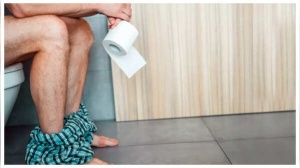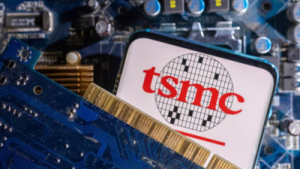Back pain is one of the most common health problems worldwide, affecting people of all ages and lifestyles. In many cases, it results from simple issues like muscle strain, poor posture, or overuse, and often improves with basic care. However, not all back pain is harmless, sometimes it can indicate a more serious condition, such as a slipped (herniated) disc. Many people mistake the symptoms of a slipped disc for ordinary back pain, delaying proper treatment. Understanding the subtle differences between these conditions is crucial for early intervention, faster recovery, and preventing long-term complications.
Understanding what back pain is and a slipped disc
General back painMost back pain is linked to muscle or ligament strains. These strains can result from heavy lifting, sudden awkward movements, or sitting in poor posture for extended periods. Over time, weakened core muscles and bad ergonomics can lead to recurring pain and stiffness. Structural issues, such as arthritis, degenerative disc disease, or spinal stenosis, can also cause back pain. However, the majority of cases resolve on their own with simple care and lifestyle adjustments. According to a study published in The Lancet , back pain is associated with significant disability and reduced quality of life, making it a leading global health concern.
Don't Let Back Pain Control You: Yoga Offers a Way Out
A slipped disc occurs when the soft, jelly-like centre of a spinal disc bulges or leaks through its tougher outer shell, often pressing on nearby nerves. This condition is also known as a herniated or ruptured disc. According to a study published in the European Spine Journal, lumbar disc herniation is the most common cause of sciatica and is strongly associated with leg pain, neurological symptoms, and reduced physical function. Slipped discs most frequently occur in the lower back (lumbar spine) but can also affect the neck (cervical spine). When a nerve is compressed, it can cause sharp, radiating pain that travels into the arms or legs, along with numbness, tingling, or muscle weakness. Without proper care, these symptoms may persist for weeks.
How to tell the difference between back pain and a slipped disc
Pain location
- General back pain is usually centralised in the lower or upper back.
- In contrast, a slipped disc often causes pain that radiates along the nerve path.
For example, a disc problem in the lower back can lead to sciatica, pain shooting down one leg. If it’s in the neck, pain may travel into the shoulder or arm.
Pain quality
- Ordinary back pain tends to feel like a dull ache or stiffness and may come with muscle spasms. It usually improves with gentle movement and time.
- Pain from a slipped disc, however, is typically sharp, burning, or electric-like. It often worsens when you cough, sneeze, or sit for too long because these actions increase pressure on the nerve.
Additional symptoms
General back pain rarely comes with nerve-related symptoms. If you notice tingling, numbness, or weakness in the arm or leg, it’s more likely to be a herniated disc. Muscle weakness can make lifting objects or walking difficult.
Underlying cause
- Back pain without nerve involvement is often due to strain, poor posture, or degenerative changes.
- A slipped disc occurs when a disc ruptures and its inner material leaks out, irritating nearby nerves. This can happen gradually with age or suddenly after heavy lifting or trauma.
Duration and recovery
- Muscle-related back pain usually improves within a few days to weeks with rest, stretching, and over-the-counter pain relief.
- A slipped disc can also heal naturally, but symptoms often last longer and may require physiotherapy, posture correction, and sometimes medical treatment.
Feature
| General back pain
| Slipped (Herniated) disc
|
Pain location
| Localised to lower or upper back, often centralised
| Radiates (e.g., into leg or arm, sciatica)
|
Pain quality
| Dull, aching, may include spasms; worsens with movement
| Sharp, burning, shooting; may worsen when coughing or sneezing
|
Additional symptoms
| Rarely includes neurological signs
| Often includes tingling, numbness or muscle weakness
|
Cause
| Overuse, poor posture, strains, and degenerative changes
| Disc tear or leakage due to wear, injury, or degeneration
|
Duration and course
| Usually improves with rest and movement over days/weeks
| May persist longer; conservative treatment may be needed
|
When to seek help
| If severe or accompanied by red-flag symptoms
| If weakness or numbness occurs, or symptoms last >6 weeks
|
When to seek medical help
Seek urgent care if:- You experience weakness, numbness, or pain that lasts more than six weeks.
- There’s loss of bladder or bowel control or numbness in the groin (possible cauda equina syndrome, a medical emergency).
- You have fever, unexplained weight loss, or severe pain after an accident.
- For general back pain: Doctors rely on your history and a physical exam. Imaging tests like X-rays or MRI are rarely needed unless symptoms persist or there are red flags.
- For suspected slipped disc: MRI scans and nerve tests such as EMG can confirm the diagnosis and assess nerve function.
Treatment options
For general back pain- Brief rest, followed by light activity.
- Heat or cold therapy.
- Over-the-counter pain relievers
- Stretching and strengthening exercises.
- Improving posture and ergonomics.
- Conservative care: Physical therapy, gentle exercise, and anti-inflammatory medication.
- Epidural steroid injections for severe inflammation.
- Surgery is considered only if symptoms persist or there’s significant nerve damage.
Practical tips for prevention
1. Maintain good posture while sitting and standing: Keep your shoulders relaxed and your spine in a neutral position to reduce pressure on your back. Using an ergonomic chair or standing desk can further support spinal alignment.
2. Strengthen your core muscles through regular exercise: A strong core provides better stability and support for your spine, reducing the risk of injury. Incorporate exercises like planks and bridges into your weekly routine.
3. Lift heavy objects with your legs, not your back: Bend at your knees and keep the object close to your body to avoid straining your lower back. If an object feels too heavy, ask for help or use lifting aids.
4. Avoid prolonged sitting and take frequent breaks during desk work: Standing, stretching, and moving every 30–60 minutes helps prevent stiffness and improves circulation. Set reminders or use a sit-stand desk to stay active throughout the day.
Disclaimer: This article is intended for general informational purposes only and should not be considered a substitute for professional medical advice, diagnosis, or treatment. Always seek the guidance of your doctor or another qualified healthcare provider with any questions you may have regarding your health or a medical condition.Also read | High cholesterol signs that appear on your skin before a heat test
 India Enters New Space Age as Astronaut Shukla Joins ISS Mission
India Enters New Space Age as Astronaut Shukla Joins ISS Mission
 X Cracks Down: Half a Million Indian Accounts Suspended for Policy Breaches
X Cracks Down: Half a Million Indian Accounts Suspended for Policy Breaches
 Google Unveils Strategy to Combat Misinformation, Boost Voter Access in India's 2024 Elections
Google Unveils Strategy to Combat Misinformation, Boost Voter Access in India's 2024 Elections
 Hair Oil vs. Hair Serum: Which is the Right Choice for Your Hair?
Alternatively:
Unlock Your Best Hair: Choosing Between Hair Oil and Serum for a Healthy Mane
Hair Oil vs. Hair Serum: Which is the Right Choice for Your Hair?
Alternatively:
Unlock Your Best Hair: Choosing Between Hair Oil and Serum for a Healthy Mane
 Bollywood's 'Swades' Anthem Joins Axiom-4 Mission: Indian Astronaut's Playlist Honors Heritage in Space
Bollywood's 'Swades' Anthem Joins Axiom-4 Mission: Indian Astronaut's Playlist Honors Heritage in Space
 Vijay Sethupathi Apologizes Amid Controversy Over Son's Film 'Phoenix'
Vijay Sethupathi Apologizes Amid Controversy Over Son's Film 'Phoenix'
 New York Assemblyman Zohran Mamdani's Style: 5 Lessons in Authenticity and Heritage
New York Assemblyman Zohran Mamdani's Style: 5 Lessons in Authenticity and Heritage
 Colon Cancer: Don't Ignore These 5 Early Warning Signs
Colon Cancer: Don't Ignore These 5 Early Warning Signs
 TSMC Regains Top 10 Global Value Ranking Amid AI Boom
TSMC Regains Top 10 Global Value Ranking Amid AI Boom
 Android Users Urged to Update Devices Amid High-Severity Security Flaws: Government Issues Warning
Android Users Urged to Update Devices Amid High-Severity Security Flaws: Government Issues Warning